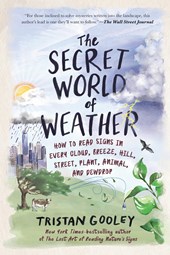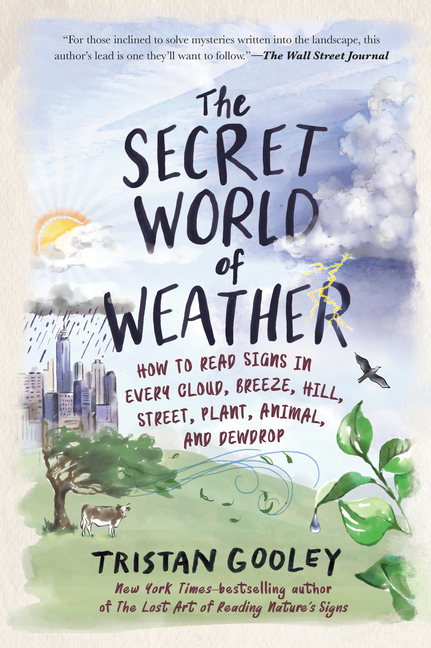The Secret World of Weather: How to Read Signs in Every Cloud, Breeze, Hill, Street, Plant, Animal, and Dewdrop
May 25, 2021
Author and natural navigator Tristan Gooley passes down the wisdom of the weather, decodes the clouds, defines the many shades and densities of fog, and much more in his new book, The Secret World of Weather.
I've been spending a lot more time outside recently, thanks to the warm weather and the COVID-19 vaccine allowing me to feel more comfortable meeting up with friends. As I've been exploring Wisconsin's wonderful natural areas, I've been more observant about almost everything: how close other people get to me and the loudness of their voices, the narrowness of trails, the increase in planes roaring overhead, the variety of bird songs, calls, and whoops, and the lush greenness of the dense plant life all around.
I've always appreciated the environment, but I've never learned to identify different species of plants and animals in this state I've lived in for my whole life. It's only out of caution that I know to avoid poison ivy and that there are (only) two poisonous snake species in the state, but it's only fair that we learn more about the world than the things we should avoid when out in it. And while I wait to secure some field guides to the birds, grasses, and trees of Wisconsin, I'm delighted to learn about another element of the outdoors: the weather.
Author and natural navigator Tristan Gooley passes down the wisdom of the weather, decodes the clouds, defines the many shades and densities of fog, and much more in his new book, The Secret World of Weather. Focusing on the north temperate zone (most of Europe and North America), Gooley vividly and accessibly explains microclimates, "the weather we actually experience." Weather has been simplified to radar maps, making many of us wholly reliant on meteorologists when planning out picnics, foraging expeditions, and beach days. When in reality, there are plenty of ways to predict the weather for ourselves. For example:
Woodlands lead to more rain, which helps many tree species to live in that space, and the cycle is strengthened. Woods are a basic sign that rain is more likely there than in the nearby area without trees. And the rain we feel changes as we walk from one tree species to the next.
The book is a pleasant balance of science and nature writing with brief glimpses of memoir or peeks at his journal: Gooley explains the effects of high and low pressure systems, illustrates the changes in slugs’ activity levels in warm and cool temperatures, poetically muses on the pleasures of sunlight's warmth on skin and clothing, and recalls his solo sailing experience across the Atlantic among a variety of other phenomena, from the miraculous to the everyday.
And even with most of the topics being fairly new to me, there's no pressure ((bad) pun intended) to understand everything quickly. It's a book for beginners in which Gooley admirably infuses his own wonder in every chapter. Because, as much as he is an expert on the topic, he admits there are so many other indications in nature beyond those that he is tuned in to. His appropriately whimsical metaphor of "the house of Wild Truth" explains this:
The wisdom and truth of the wild is laid out on an enormous table in a grand mansion. We are not allowed inside the building. Each time we are outside, we're trying to see what lies on the table. […] There is no window that gives us a perfect view of the table, but we learn something from each perspective, and slowly we come to understand how the pieces on the table are related to each other. It is a giant three-dimensional jigsaw puzzle and, if we're lucky, we gradually see enough pieces and how they fit together to gain some idea of the full picture.
The light, the wind, the clouds, the shape of the trees, the angle of the leaves, the behaviour of the badger and the deer...And this was only what we saw through a couple of the windows.
As intimidating as it is to start reading this lengthy book about elements of the natural world we may not give much thought to normally, Gooley is an engaging storyteller and guide. If you don't believe me, look at his YouTube channel. If you’re interested in learning as much as you can from this incredible natural navigator, he has comprehensive online courses and has also written several other bestselling books How to Read Water, How to Read Nature, The Lost Art of Reading Nature’s Signs, The Natural Navigator, and The Nature Instinct. His excitement for the natural world is infectious, and now I, too, am excited to continue learning to see the jigsaw pieces that make up the larger puzzle of the natural world. I’m already confident that next time I venture outside, I’ll be able to decipher or at least be more appreciative of nature's many codes.




